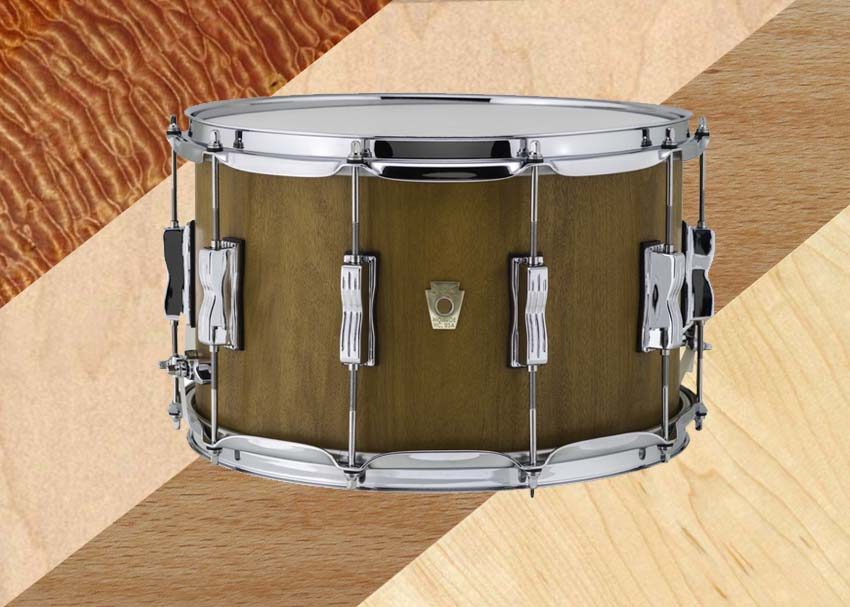The shell kit is a drummer’s main weapon when fighting for a spot in the mix and drum tonewood has to be chosen to match a drummer’s mix desire. From punchy, attack-driven shells to low and slow, resonance-based ones, choosing the right drum tonewood is all about your taste. Though many tonewoods have cool aesthetic features such as a their grain or color, they offer more than just aesthetics. Tonewoods contain specific characteristics that bring out the beauty of your kit. A kit isn’t truly made unique just because of a wacky color or strange configuration — it’s the tone you get out of it. Popular tonewoods all have one thing in common: they bring something worthwhile to your kit’s sound. It’s important to keep in mind that while there aren’t any “genre-specific” tonewoods, certain tonewoods may bring something more beneficial to the genre you play. With that in mind, here are a list of the most popular drum shell tonewoods and accompanying sonic properties of each.
Popular Tonewoods
Birch is an attack-driven tonewood used in dozens of brand’s shell kits. Because of its affordability and the availability of birch trees, it is a great intermediate level hardwood. Along with its cutting attack with tons of projection, birch offers a great mix of crystal-clear high frequencies and low-end punch that’s a breeze to mix on rock, punk and even hip-hop records.
Poplar is often a brand’s budget tone wood. With its reduced highs and a ton of warmth on the low end, poplar is great for players on a budget looking for mahogany warmth with a slightly reduced price tag. Poplar’s affordability makes it ideal for beginners, while its tonality makes it great for genres like rock, country or jazz.
Maple is the quintessential drum tonewood and is a go-to in nearly every professional recording studio for an all-use drum sound. Maple toes the line perfectly between its highs and mids, and maximizes resonance with warm lows. This creates an even-sounding drum that provides the mix engineer with a blank canvas in the mix. Maple can fit in well with nearly any genre, but rock, soul and jazz have greatly benefited from a maple shell kit in the mix over the years.
Mahogany can still be found in a number of drum companies’ kits nowadays and for good reason. It has a vibrant resonance with a warm low-end and not many high frequencies to speak of. This cuts some of the sound projection from the kit. Mahogany is best suited for styles like R&B, country and jazz.
Beech wood is a favorite for producers looking for that great “crack” snare sound. Pronounced highs and mids give each strike a focused attack that’s easy to mix. And beech gives out great low-end punch that rounds it out as a snare tonewood. Beech is a “Swiss Army knife” of tone woods, but can be heard predominately in progressive, jazz and gospel genres.
Bubinga is a beautiful looking wood that sticks out nicely on natural-stained snare drums and shell kits, but beyond aesthetics, bubinga offers a great sensitive tone with tons of great punch. Similar to maple, it offers an even amount of mid and high frequencies and a lot of tuning variation. Because of its hardwood nature, its attack projection is much more pronounced in a mix than other tone woods. Bubinga is great for rock, punk and metal.





Leave a Reply